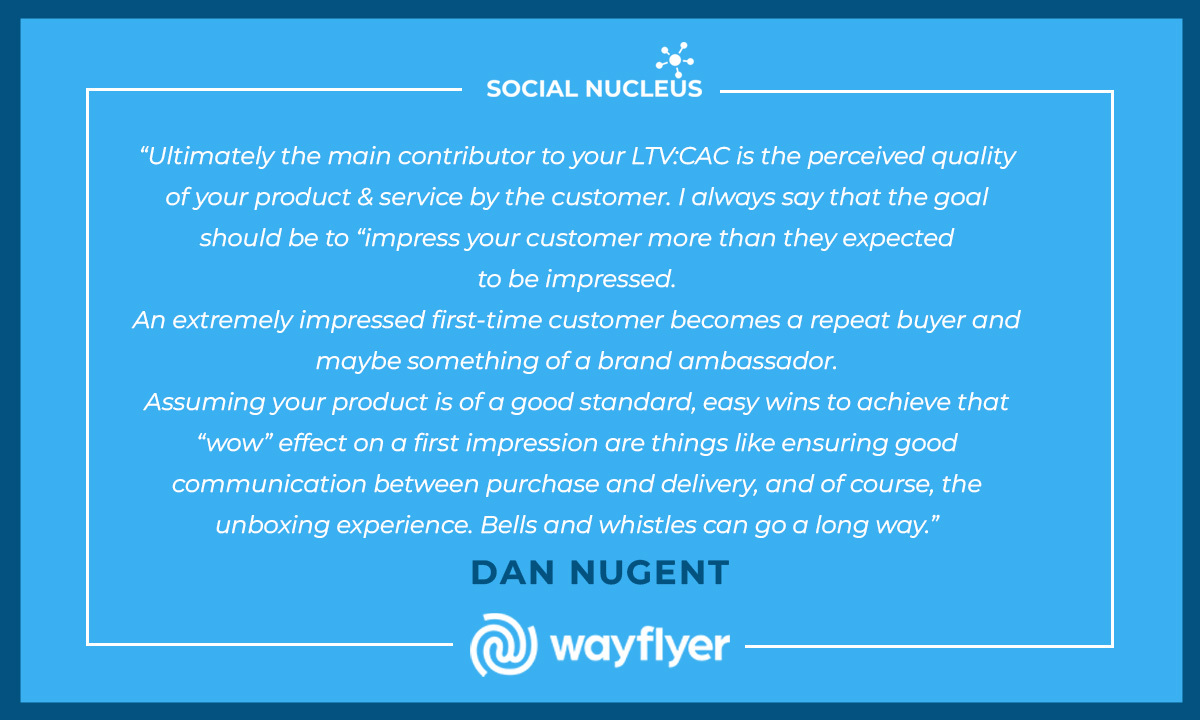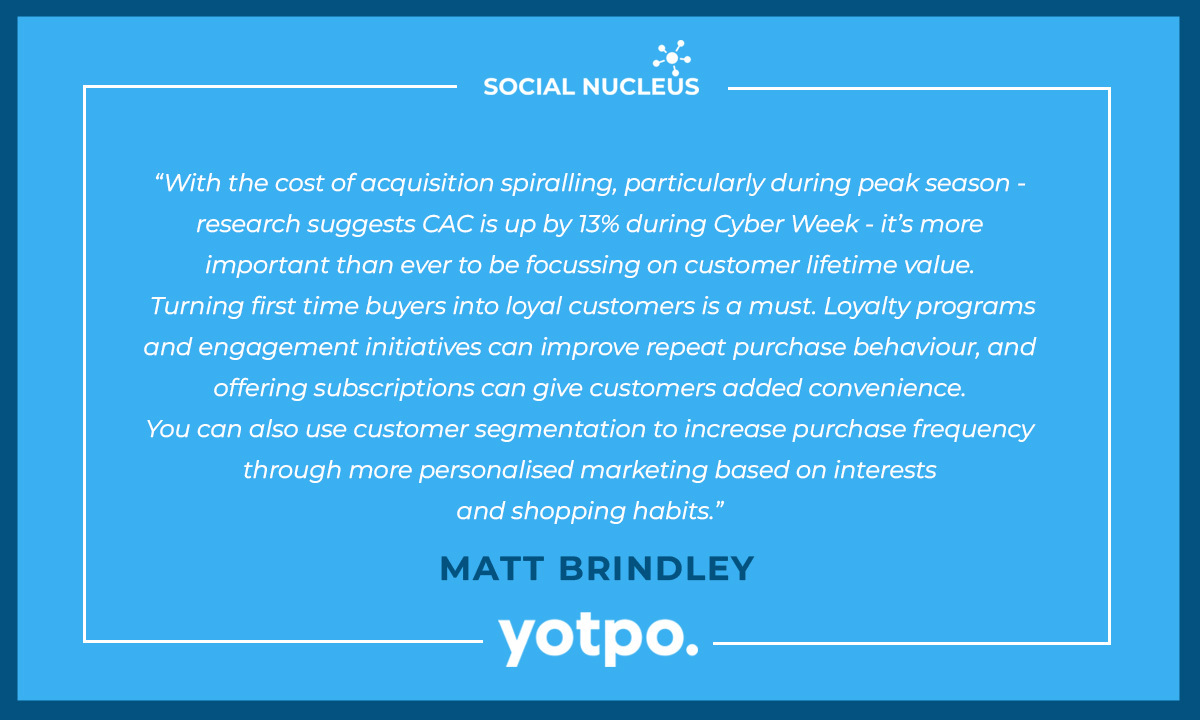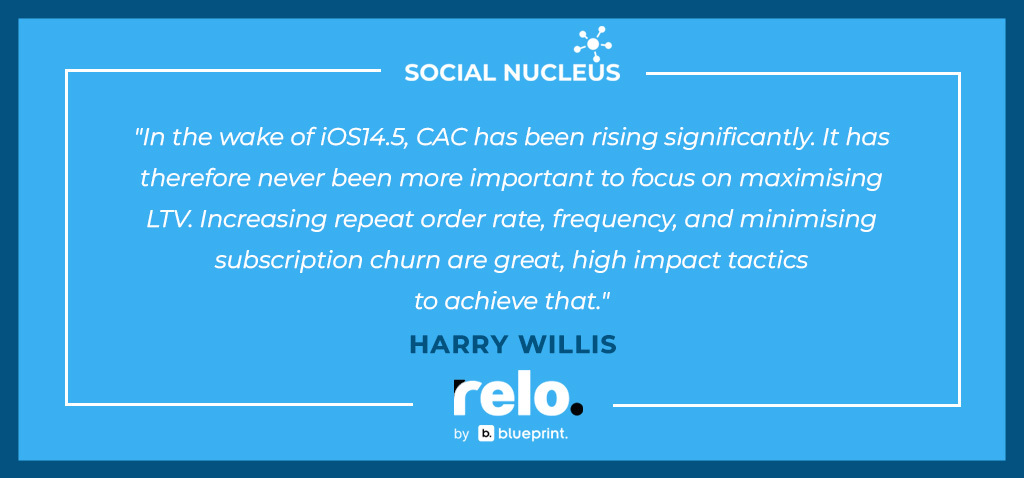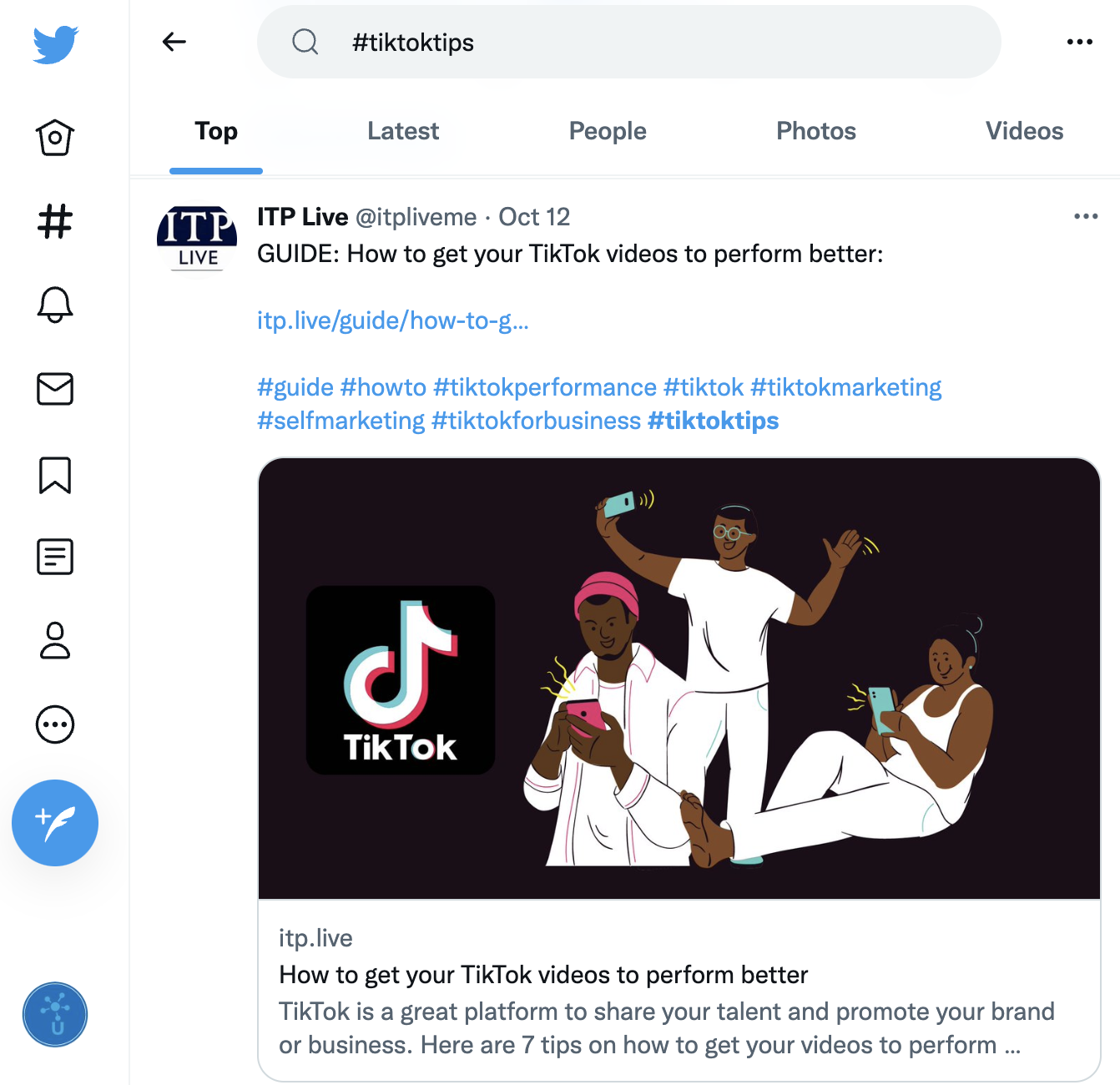If you want to secure your brand’s healthy growth and profitability in 2022 and beyond, the LTV : CAC ratio is an essential metric to track. It compares your customer Lifetime Value (LTV) and Customer Acquisition Cost (CAC), showing you how much your customers are worth versus how much you’re spending to gain more.
Hence it allows you to plan your spending and strategies across your sales, marketing and customer service teams, to ensure the long-term health and success of your business.
In other words, the LTV : CAC ratio is a KPI you need to be paying attention to in 2022.
In this article, we’ll be going through what this metric means, how it’s calculated and why it’s important to monitor this ratio as your business grows.

What is CAC?
CAC, or Customer Acquisition Cost, is the total cost needed to attain a new customer, over a specific time period.
It includes your marketing spend (e.g. ad spend and creative costs), the overhead used when drawing in new leads and converting these into paying customers, plus salaries and commissions.
Once you’ve calculated the amount spent on bringing in new customers, versus the number of customers you’ve actually attained, the CAC is a valuable way to measure your business’s profitability.
You’ll be able to find out the efficiency of your efforts and spending across your sales and marketing processes, and how you can improve on this and reduce your CAC.
How to calculate your CAC
First decide on the time period you wish to analyse (the month, quarter, or year). Within this scope, add your total marketing, and divide this by the number of new customers you’ve acquired.
This will give you the estimated cost of attaining a new customer.
For example, if your business spends £100k on marketing, and acquires 500 new customers, your CAC will be £200. As 100/500 = 200.
In other words, the estimated amount you’ll need to attain each new customer would be £320.
What is your customer LTV?

Your LTV, or Lifetime Value, is the expected revenue that a customer brings during their relationship with your business.
It allows you to predict how much revenue you may expect to generate from an average customer, once they make their first purchase from you.
By paying attention to this metric, you’ll be able to assess how you can improve on this, and nurture your customer relations to ensure customers return to purchase again and again.
How to calculate your LTV
By following this step-by-step process, you’ll be able to calculate your average customer Lifetime Value.
1 – Calculate your average purchase value (divide total revenue within a specific time period by the total number of purchases).
2 – Calculate your average purchase frequency (divide the total number of purchases by the number of unique customers that have converted).
3 – Multiply these two values together to find your average customer value.
4 – Then calculate your average customer lifespan by averaging out the number of years customers continue to purchase from your business.
5 – Finally, multiply your average customer value by your average customer lifespan to get your customer lifetime value (LTV).
The next step is combining these two values to find and analyse your LTV : CAC ratio.
The LTV : CAC ratio

Divide down your calculated LTV and CAC to a simple ratio (x : x). For example, if your LTV is £900 and your CAC is £300, your ratio divides down to its simplest form of 3:1.
If your LTV : CAC ratio gravitates closely around 3:1, this indicates a business with a healthy growth potential. Aim for this approximate benchmark as a sign of business success.
But what if each value is higher/lower than this benchmark?
If your ratio gravitates around the 1:1 mark, it may seem as if you’re breaking even. However, it’s likely that you’ll be losing money per acquisition as additional costs may not be included in your calculations (such as shipping costs and taxes).
If your CAC is higher than LTV (e.g. giving a ratio of 1:1.5), you’re spending more to attain new customers than you’ll ever make back from them. This means you’ll be significantly dipping into your potential profits.
If your LTV gives you a higher ratio value than 3:1 (e.g. 5:1), this indicates a growth opportunity. It could mean you could be spending more on your marketing and sales efforts to attract new leads and customers.
Why is this ratio important to use right now?
As can be seen above, once you’ve calculated your LTV : CAC ratio, you’re able to evaluate how to improve your internal processes, and consequently improve your business’s growth potential and profitability on a long term basis.
By incorporating this metric into your analysis and reporting, you’ll be able to secure your business’s healthy long-term growth and success.
The LTV : CAC ratio is also a reliable way to indicate your business’s long-term health to current and potential investors.
How you can improve your LTV : CAC ratio
Here are a few examples of ways you can achieve a LTV : CAC ratio that gravitates more closely around the 3:1 benchmark:
1 – Avoid relying solely on paid ads – as they drive acquisition costs up considerably, so make an unsustainable sole focus when looking at long-term growth.
2 – Invest in your CRO (conversion rate optimisation, or the process of converting visitors to leads, and leads to converting customers). For example, look into optimising your site and checkout process for online conversions, and spruce up your copy and content to engage customers and push them further along the customer journey.
3 – Give value to your current customers. By listening to their suggestions in customer feedback and reviews, and nurturing your customer relations with rewards and loyalty programmes, you’ll encourage further conversions.
4 – Implement a customer referral programme. Referred customers will already be familiar with your brand and product line (lowering your CAC over time), and referring customers are more likely to make repeat purchases with referral rewards (increasing overall LTV).
5 – Utilise CRM platforms to optimise your sales funnel. CRM tools will facilitate the process of nurturing leads into paying customers, giving your sales team the time to grow their databases, and consequently increase the number of generated sales.
6 – Focus on retention with your email/SMS marketing. Through these channels, you’re reaching more engaged customers with a potential for many repeat purchases (both via campaigns and post-purchase automations).
By ensuring your marketing, sales and customer service teams are focussing on improving your LTV : CAC ratio, your business can collectively move towards sustainable long-term growth.
With more loyal customers, creative marketing strategies and productive sales processes, aligned towards the common goal of increasing your LTV with the lowest spend possible, your business can only go from strength to strength.
So ensure the calculation of your LTV : CAC ratio is high on your priority list, so you can best understand how to optimise your strategies and get your business to the next level 🚀










